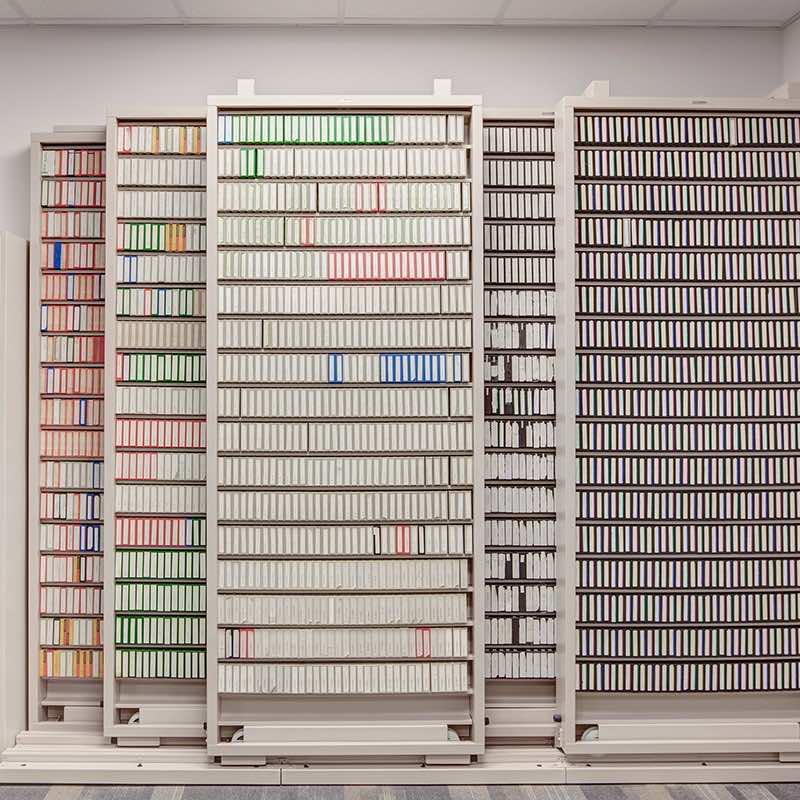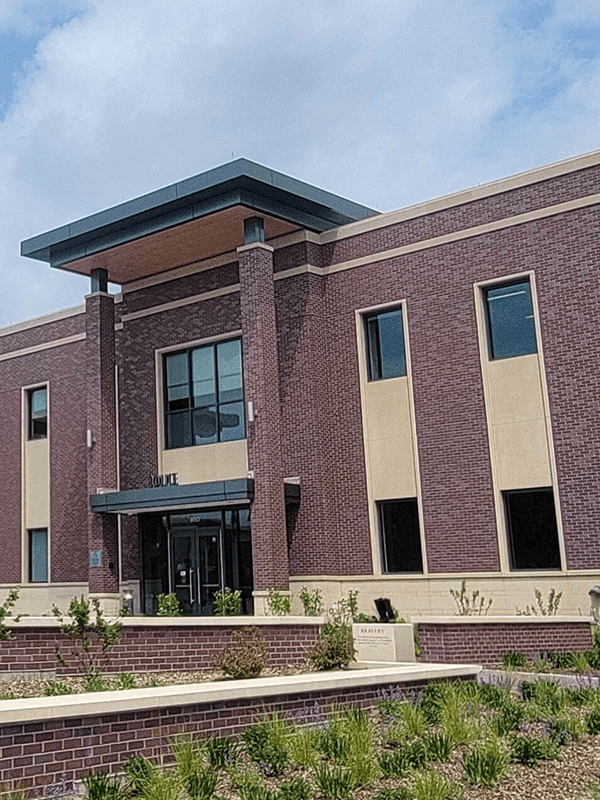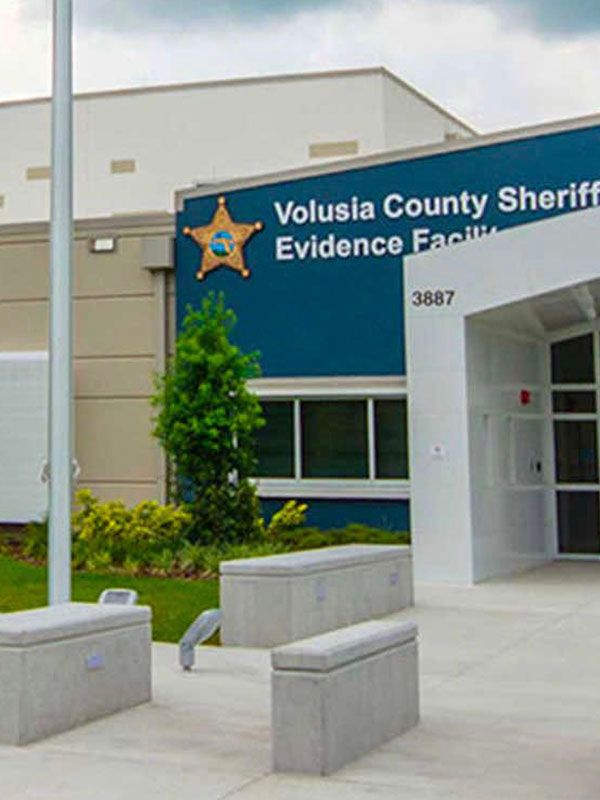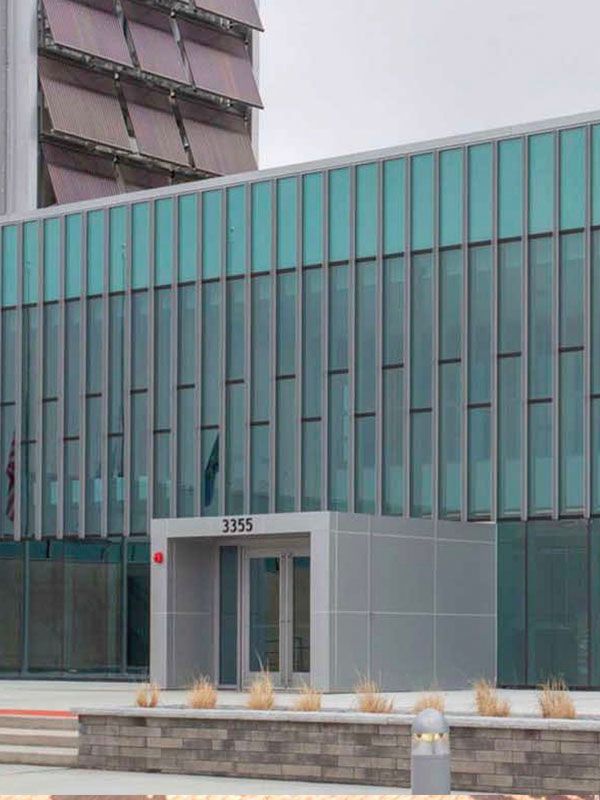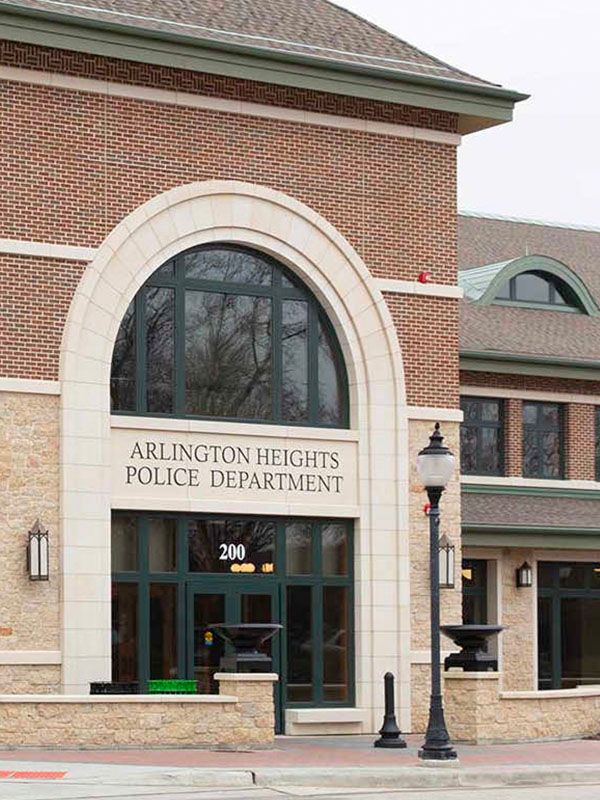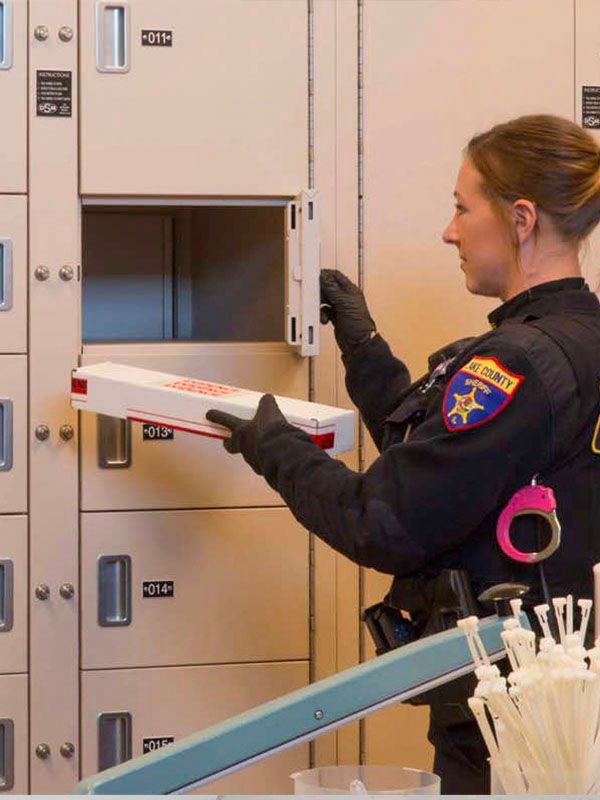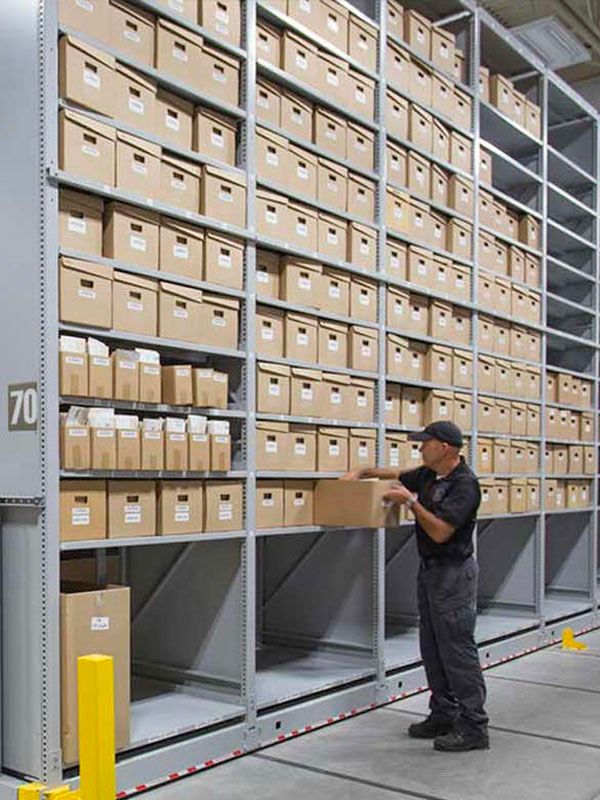Salt Lake City, Utah
Sustainable Minded Public Safety Facility
Looking at storage in a new way made it possible to finally house all operations under one roof at the LEED-certified Salt Lake City Public Safety Building.
Smart Storage Translates to Efficiency
Sometimes, you’re given a task at your job and simply don’t know where to begin. That was how Tim Doubt, Deputy Chief with the Salt Lake City Police Department (SLC PD), felt a few years ago, when he was given a monumental task—to plan the layout and design of Salt Lake City’s new Public Safety Building. “The Chief came in and said, ‘Hey, I need you to build a new building,” he laughs. “And of course, I have no experience whatsoever with building buildings. I had to surround myself with smart people who knew what they were doing.”
Doubt learned quickly. He hired architects and construction firms and in the beginning stages of the project, toured several modern public safety and justice centers throughout the United States—including the Parker Police Department in nearby Colorado. With the new building, all of Salt Lake City’s operations—police, fire, Department of Corrections, and all dispatch services—would be under one roof, which was instrumental to the efficiency of the department. It was imperative to design a space where all employees could collaborate better than they’d been able to in the past.
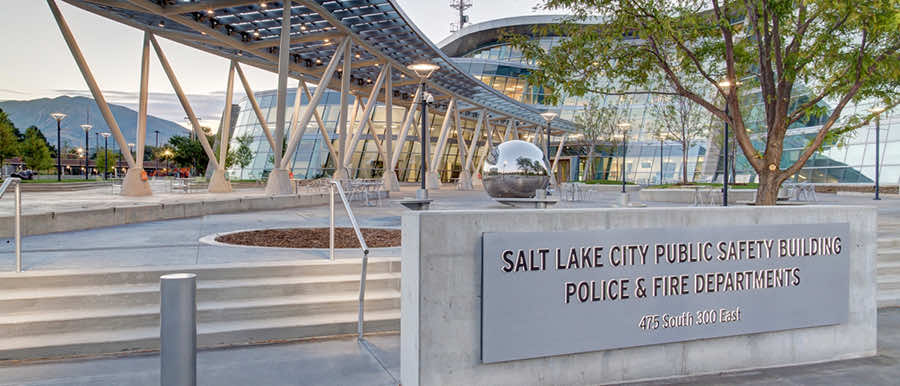
Downtown Construction & Green Aspirations
After talking with officers and chiefs who were tasked with building similar buildings in their communities and consulting with the department’s architectural firm, GSBS Architects, Doubt knew two things for sure. The first was that everyone seemed to tell him he was going to run out of storage. “‘You’re going to run out of space,’ they would tell me,” he said. “‘Always plan for more storage space.’ We didn’t want to put in extra rooms, and we didn’t want to waste a lot of the building space on storage—so we needed to make our storage smarter.”
The second point went hand-in-hand with the first. As SLC PD Detective Bill Silver explains, “We were mandated to build on the city campus, so had to be so much distance between us and City Hall, or our center of government,” he says. “Because of that, the new building is in the center of downtown, and the price per square foot there is extremely high. We didn’t want to have to build a police department with a warehouse attached, and we had to meet all of our operational needs within the building—which meant we had to build all the storage spaces we needed inside the building.”
First Public Safety Building in the Nation to Approach a Net Zero Building
This means that the building must generate as much energy as it uses. Strategies for achieving this include the use of solar panels, utilizing natural lighting, high-efficency mechanical systems, and even the implementation of an employee behavior program to reduce energy use.
Storage Solutions adding to LEED Certifications
In addition to these two points, another important factor was the desire to adhere to the LEED® (Leadership in Energy & Environmental Design) green building certification system. The building’s planning committee wanted to achieve a minimum of a LEED® Silver rating—and there was also the goal of being the first public safety building in the nation to approach a Net Zero rating, meaning the building generates as much energy as it uses. To make sure all of these conditions were met, Doubt and his team spent countless hours with their architecture firm, discussing every possible nuance of the building.
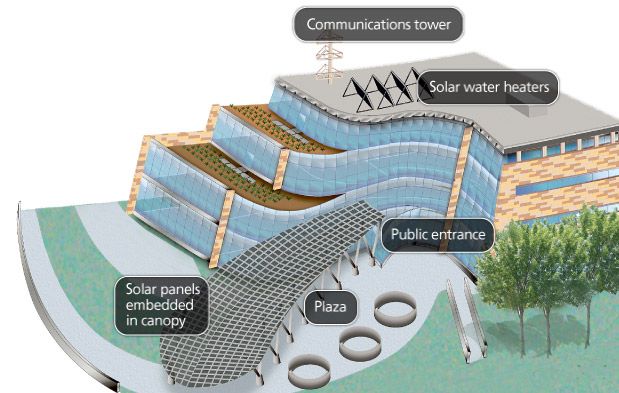
Spacesaver’s EPDs & HPDs
Spacesaver’s EPDs & HPDs

When conversations started happening around storage, GSBS, who had worked on a variety of public safety buildings, recommended Spacesaver—not just for products, but also as a consultant who would be able to recommend storage solutions that efficiently organize and compact all the items that needed to be stored. The local authorized Spacesaver representative, recommended several different storage solutions based on the needs of each individual space. “She didn’t just ask how much storage we needed—she gave us so many ideas on how we could use the space better,” Doubt says. “We wound up taking those suggestions.”
Shelves that Move, Save Space & Time
Many departments within the Salt Lake City Public Safety building were in need of compact storage that was housed in one location. One example was the Quartermaster/Armory facilities; another was the records room. “We needed to store our most sensitive equipment—bulletproof vests, weapons, gas masks—in the correct way,” says Martin Cauffman, who serves as the Salt Lake City Quartermaster. “It doesn’t matter how much shelving you have. If it’s not the right kind, your equipment won’t be stored correctly, and you won’t be able to have access or see what’s available to you.”
To aid with the goal of increased access and safety, high-density mobile storage systems were installed. These “shelves that move” enable both departments to store much more equipment in a limited space, and also be able to give the added security to the specific types of equipment. A lateral storage system was installed for media storage. And in the case of the Quartermaster Facility, weapons racks were attached to the mobile systems to provide another layer of security for firearms. “It allows the open access that my staff needs—these people are accountable for a monthly physical inventory, and they need to be able to come into each aisle, because every piece of equipment is stored by category,” Cauffman says. “Now, they don’t have to touch anything—they can do a physical ‘eyes-on’ count, which saves a lot of time and resources.”
On top of the added security for the items being stored, a mechanical safety sweep on the mobile storage system provides protection for people or objects in the open aisles by automatically stopping carriage movement upon contact with an obstacle.
Earthquake-Proof Storage Upgrades
Salt Lake City, Utah might not come to mind when creating a list of earthquake-prone cities in the United States, but in reality, seismic activity is something that is always on the horizon. The city’s proximity to two connected faults have the ability to combine and produce powerful earthquakes, and the city usually has a “D” or “E” seismic building design category.
Supports, carriage fasteners, and the static shelving within the mobile systems were configured for earthquake-proof storage to make sure the material stored within the system would risk minimal damage. In addition, rails for the systems were drilled to accommodate a deeper embedment in the concrete of the building, and all of the mobile systems within the building were outfitted with anti-tip features to provide maximum protection against potential seismic forces
For the officers and staff the earthquake-proof storage is one important component of an all-encompassing solution—one that will keep the department safe, and, in turn, keep the residents of Salt Lake City safe in case of a disaster. “If you wanted to be safe in case of emergency in Salt Lake City, this would be the place to be,” says Salt Lake City PD Detective Bill Silver.
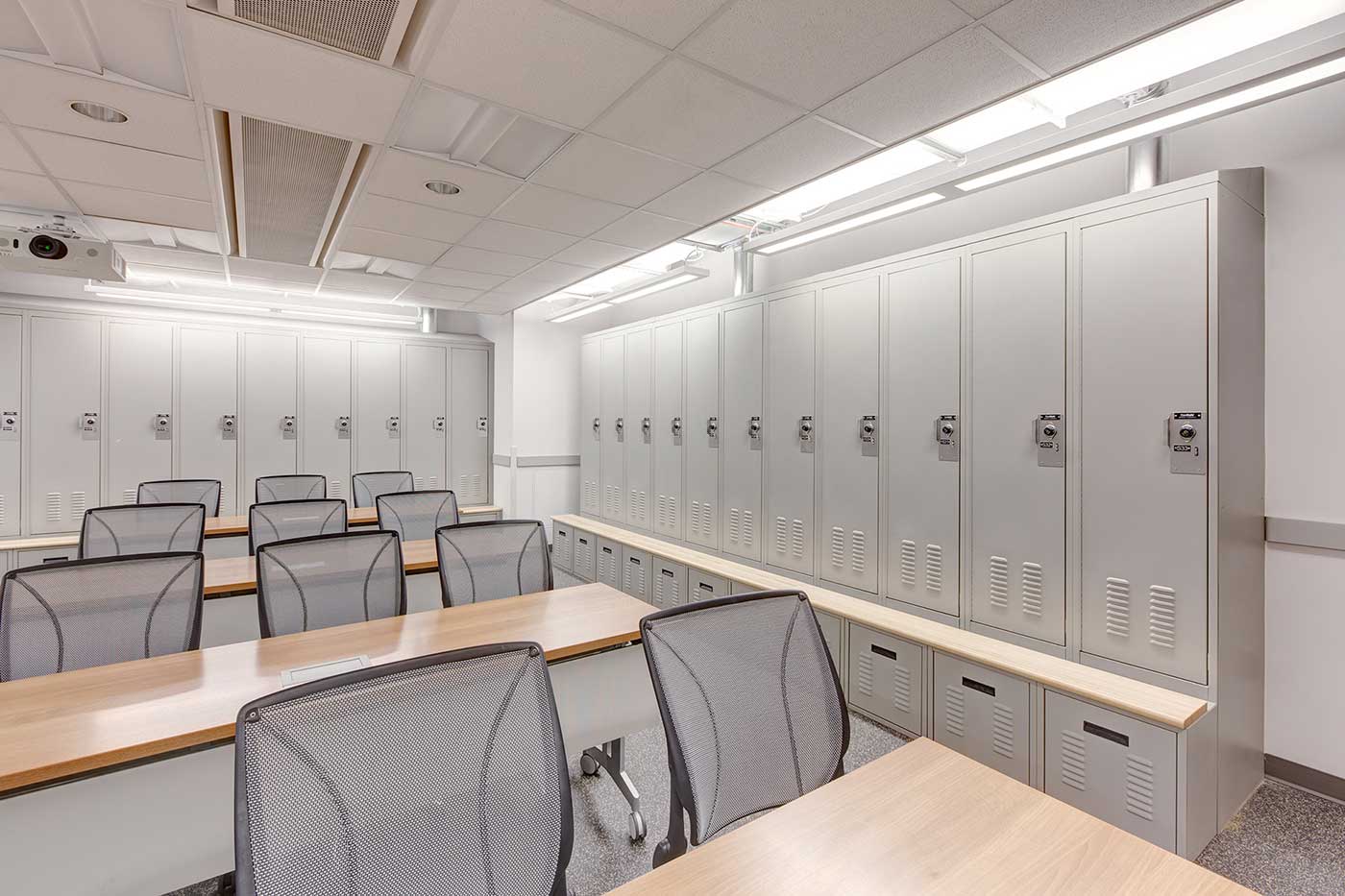
The building is designed to withstand a 7.5 magnitude earthquake. After an earthquake, all part of the building—Police, Fire, the Corrections Department, and the Dispatch Center—will be fully operational immediately.
Inclusive Locker Rooms
We’re often asked: How do we decide how many lockers to put in the women’s locker room in relation to the men’s? Is there a formula to predict our department’s future gender mix?
The answer is, there’s really no way to predict future hiring patterns. We’re seeing a trend toward gender-neutral locker rooms, where all the lockers are located in a common area adjacent to private showers and changing rooms. This arrangement solves three problems at once:
- It eliminates the guesswork of trying to predict the gender ratio of your police department ten or twenty years into the future.
- It allows everyone to take part in conversations before and after shifts (we’ve heard that the one or two women on a shift feel excluded from these conversations).
- It creates a more inclusive environment.

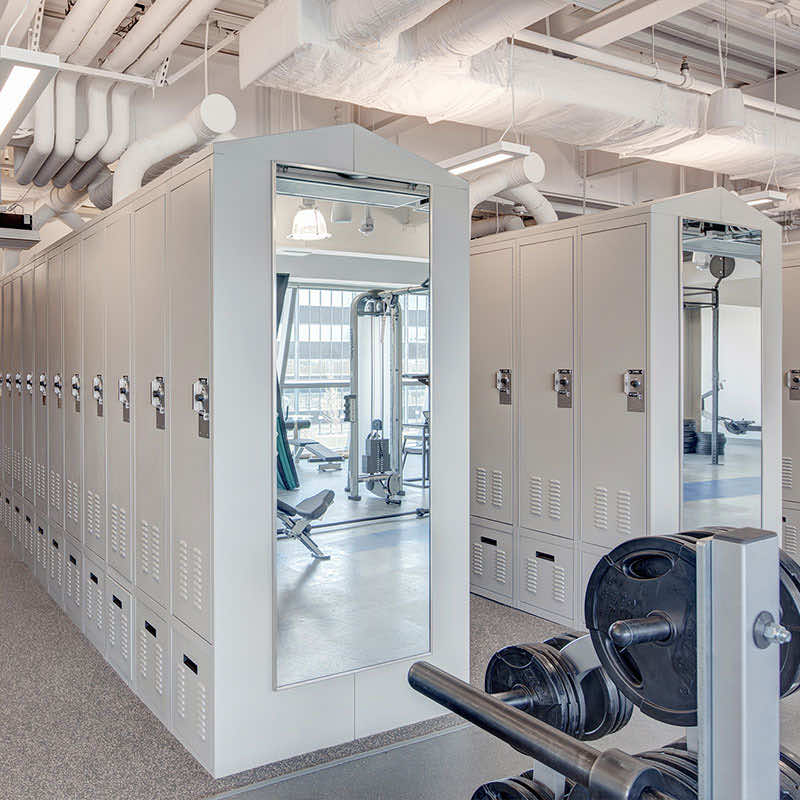
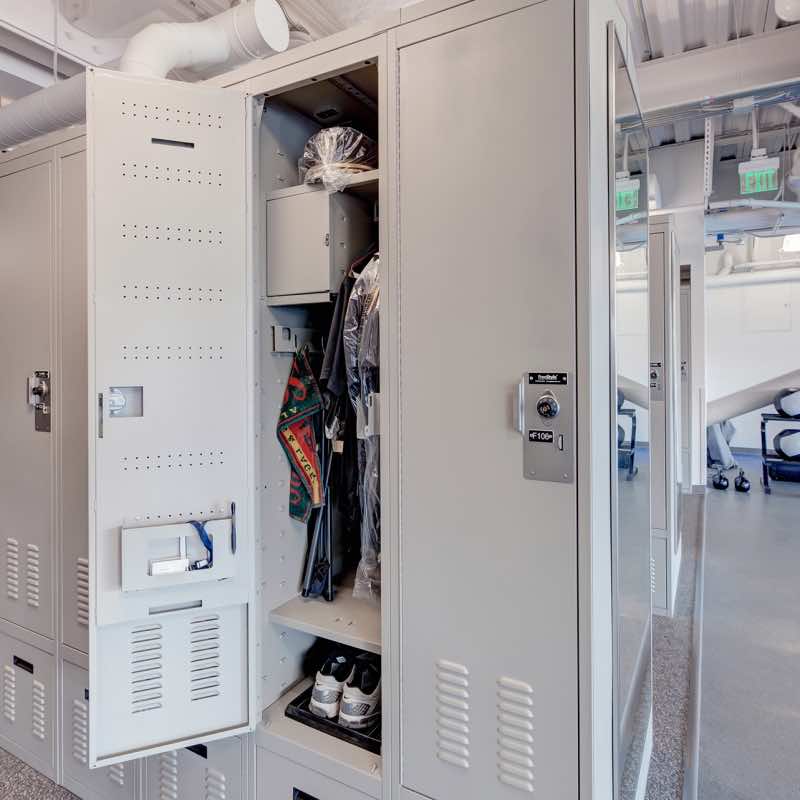
Fitness Center
The lockers in the Fitness Center are especially unique, as they aren’t located in a locker room—they’re right in the middle of the center. For that reason, it was really important that the lockers not smell like a locker room, so Doubt and his team worked with Spacesaver to create a locker ventilation system. “It’s pretty convenient,” he says. “You don’t have to have towels hanging on the outside to dry—you can store everything in one place, you can lay your vest down in custom-sized bottom drawer to dry—the ventilation is all built-in.”
Officer Garage Lockers
Doubt’s partner at SLC’s Logistics Bureau, Lt. Scott Teerlink, says the lockers have been instrumental to many parts of the building. “We have so many different pieces of equipment, so finding a way to store those items in one location has saved us from having to create separate rooms,” he says. In the case of Salt Lake City’s Motorcycle Unit, having police lockers right in the garage eliminates the extra time needed to go into the building and collect their gear, and the same goes for the gear bag storage in the corridor closest to the parking garage for the officers.
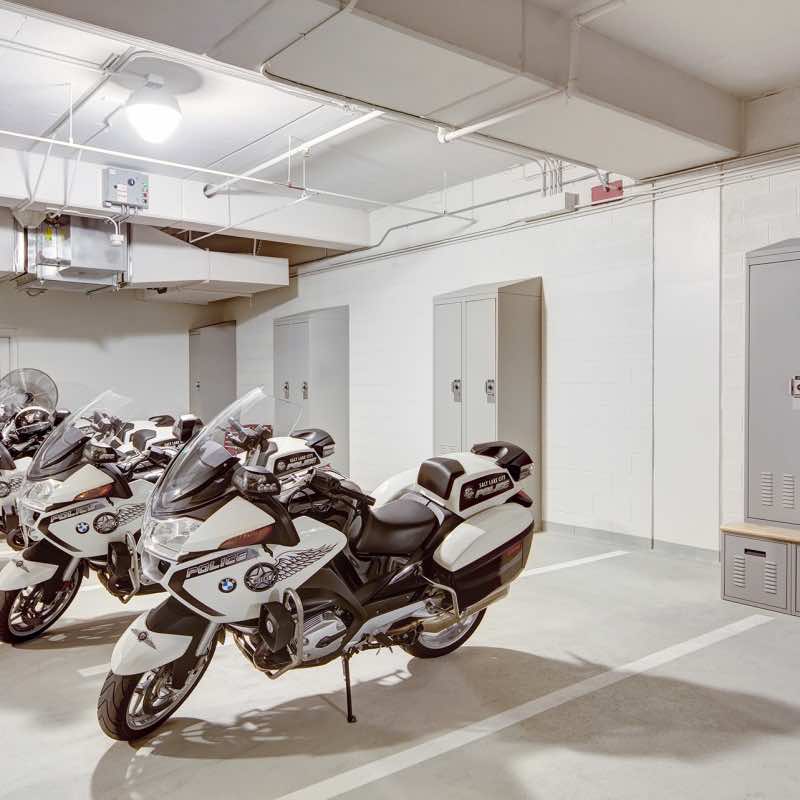
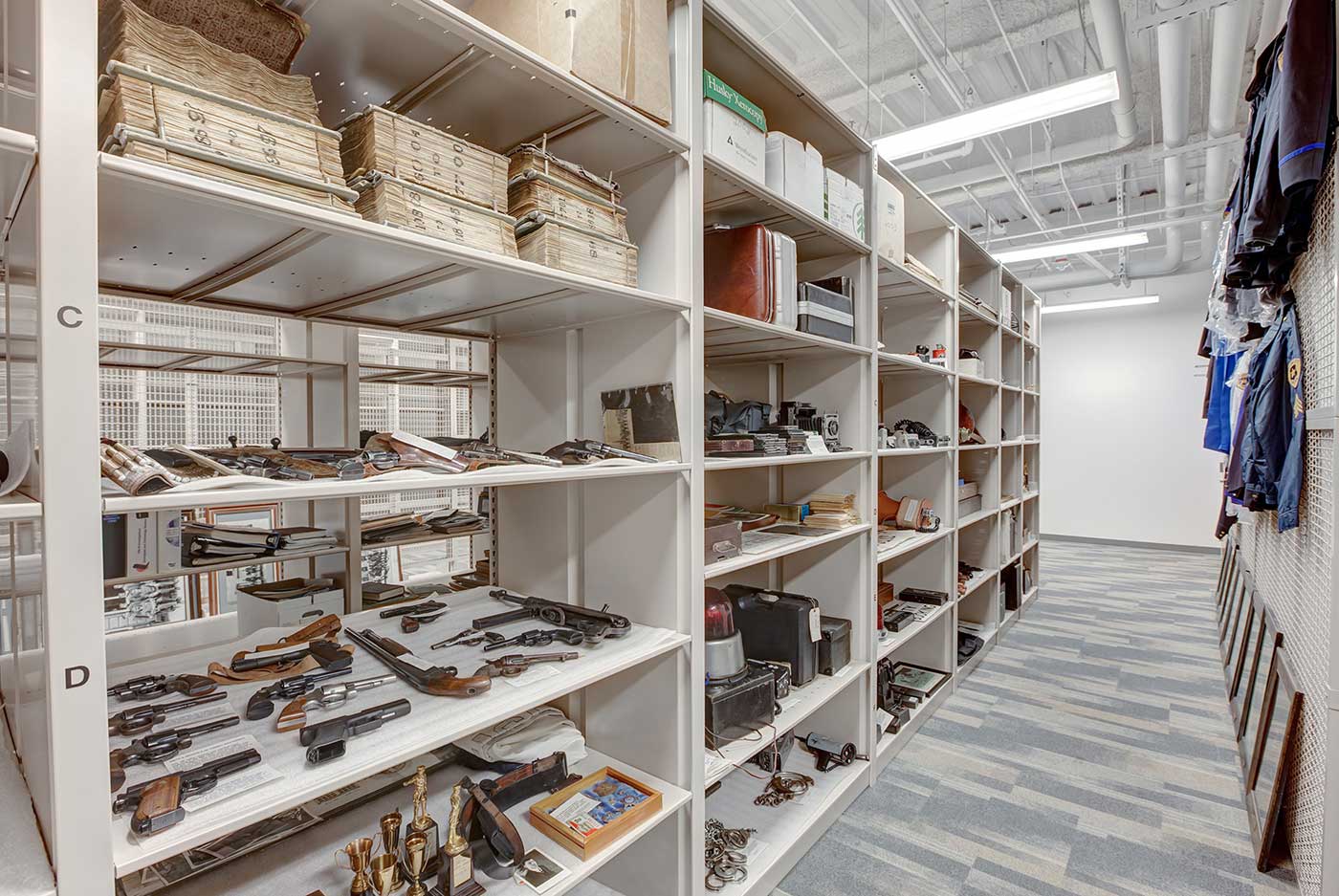
An interesting part of the Salt Lake City Public Safety Building is its Police & Fire Museum, which pays respect to fallen SLC police officers and firefighters as well as highlight a combined 293 years of service for the two departments.
Preserving Police History
A truly unique part of Salt Lake City’s planning was making sure they had space for a combined 293 years of police and fire department museum archives. The new building would have a space for a museum for the two entities, devoted to a small but robust collection of police and fire history.
Previously, all of the archives, documents, and photographs were being stored in boxes and spread throughout the city in off-site storage warehouses. Spacesaver was able to work with the architects of the building to design a warehouse-type area in the basement of the new building. Static shelving and art racks, combined with an updated cataloging system, mean there is room for all of the existing archives in addition to space for future acquisitions.

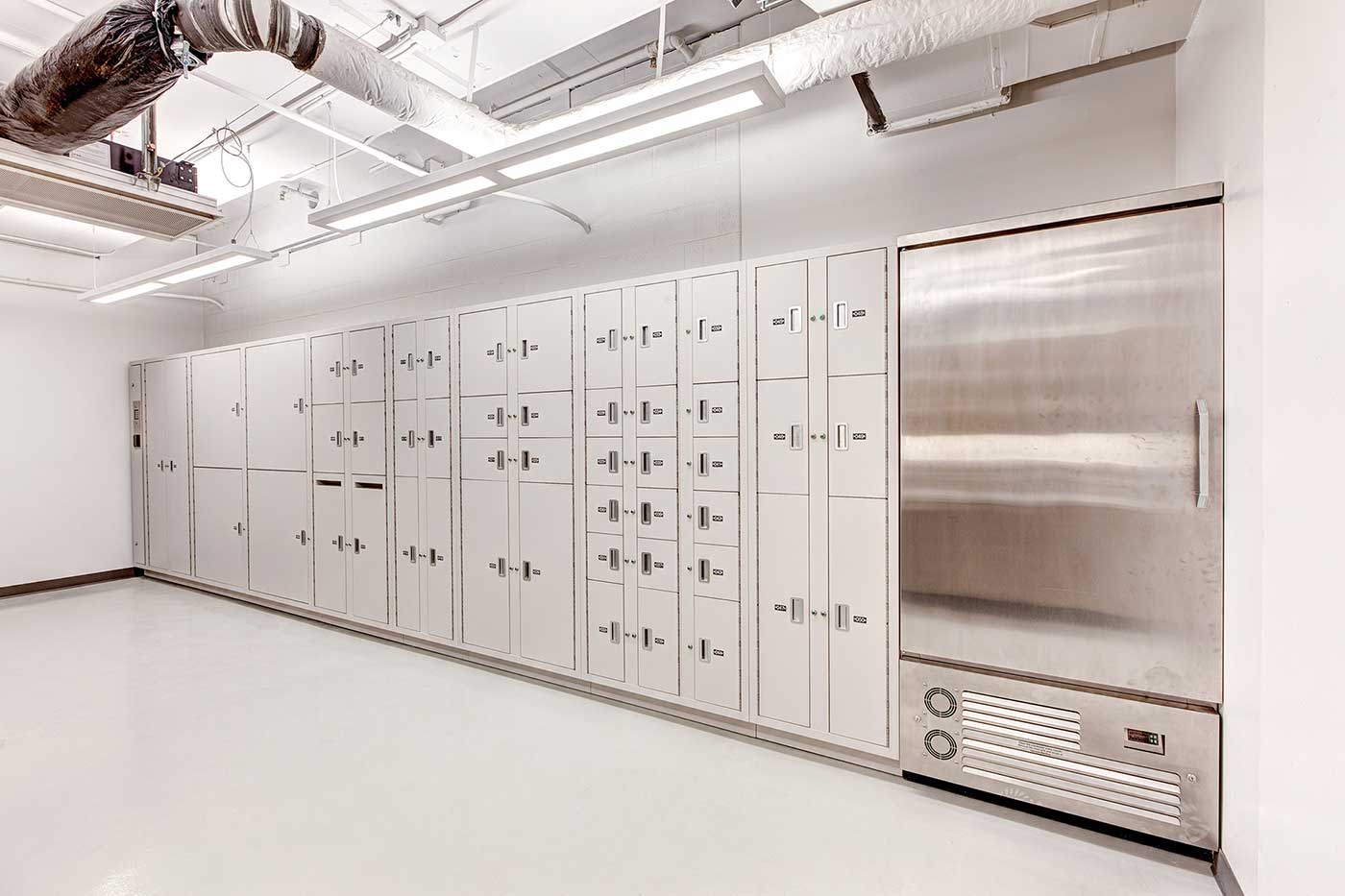
"Whenever you’re able to be more efficient, that’s the whole goal of public safety—to save lives and to make the environment and community safer. By being able to work together better, we’re able to work harder to prevent crime."
- Lt. Scott Teerlink, Salt Lake City Police Department
Complete Storage Solution
The sum of all of the Salt Lake City Public Safety Building’s parts—from the efficient storage solutions and green building practices to the seismic design considerations and state-of-the-art technology—has not only made it possible for the Police, Fire, Corrections, and Dispatch Services to exist under one roof, but it’s also made the building a hub for the city it serves. Because of the various space considerations, it was possible for the building to include a large community space for CPR classes and additional trainings, and the facility has become a “one-stop shop” where Salt Lake City’s citizens can get questions answered and learn about the things that are impacting their community.


